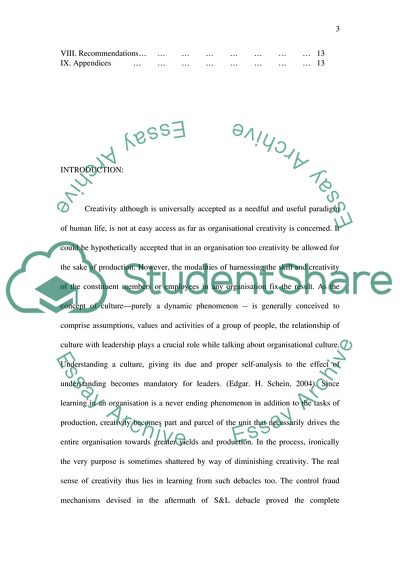Cite this document
(Paradigm of Human Life Term Paper Example | Topics and Well Written Essays - 4044 words, n.d.)
Paradigm of Human Life Term Paper Example | Topics and Well Written Essays - 4044 words. Retrieved from https://studentshare.org/human-resources/1552852-organizational-learning-and-development-research-report-on-creativity-and-innovation-in-an-organization
Paradigm of Human Life Term Paper Example | Topics and Well Written Essays - 4044 words. Retrieved from https://studentshare.org/human-resources/1552852-organizational-learning-and-development-research-report-on-creativity-and-innovation-in-an-organization
(Paradigm of Human Life Term Paper Example | Topics and Well Written Essays - 4044 Words)
Paradigm of Human Life Term Paper Example | Topics and Well Written Essays - 4044 Words. https://studentshare.org/human-resources/1552852-organizational-learning-and-development-research-report-on-creativity-and-innovation-in-an-organization.
Paradigm of Human Life Term Paper Example | Topics and Well Written Essays - 4044 Words. https://studentshare.org/human-resources/1552852-organizational-learning-and-development-research-report-on-creativity-and-innovation-in-an-organization.
“Paradigm of Human Life Term Paper Example | Topics and Well Written Essays - 4044 Words”, n.d. https://studentshare.org/human-resources/1552852-organizational-learning-and-development-research-report-on-creativity-and-innovation-in-an-organization.


